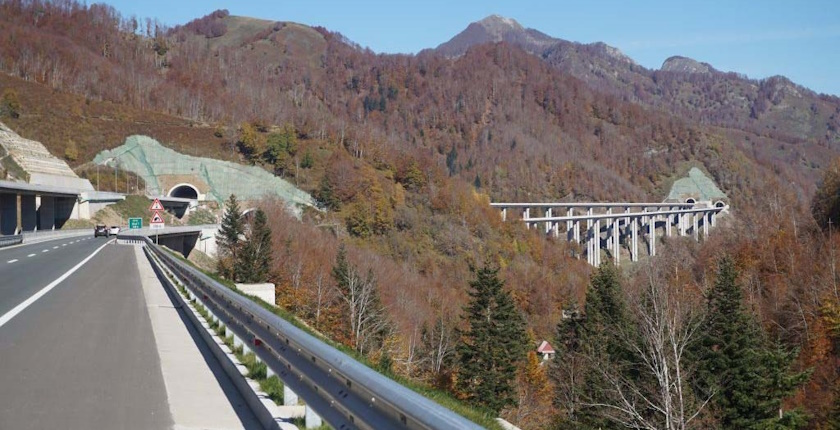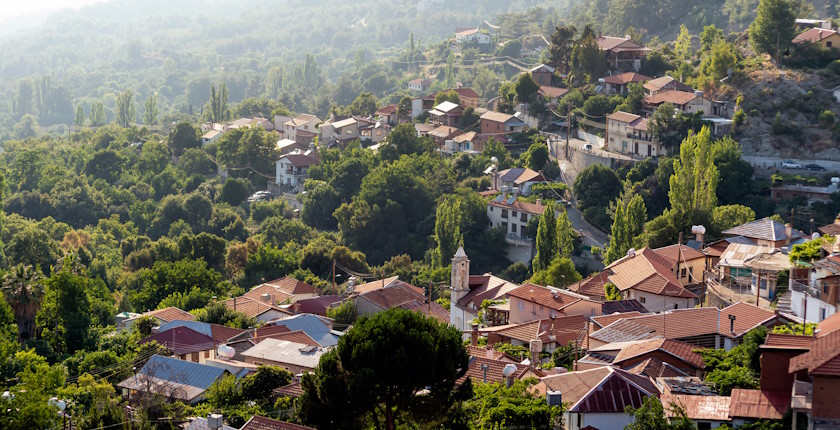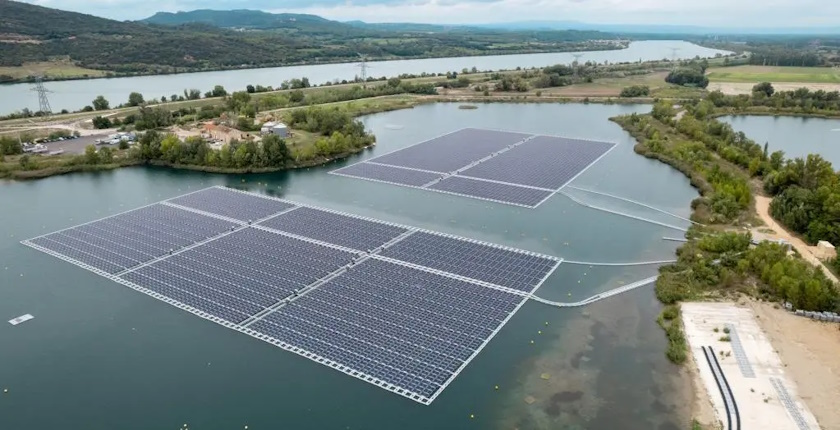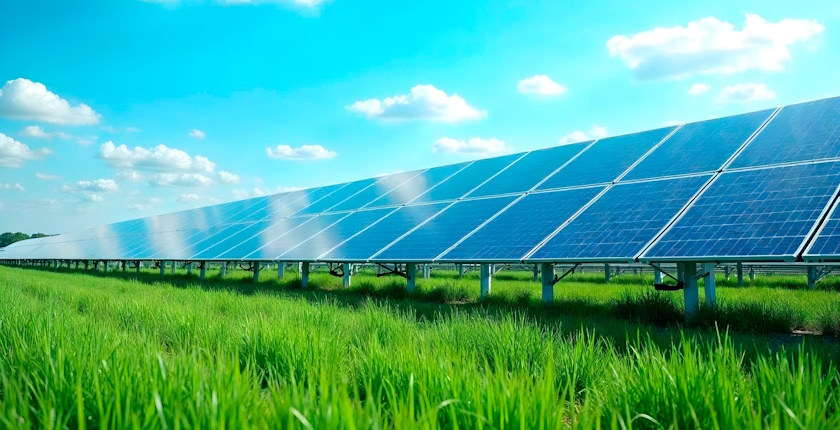
Montenegro preparing to install solar panels along highway
State-owned Monteput is preparing a study on installing solar panels along the Bar-Boljare highway. The company has launched a tender for the development of a techno-economic study of the use of solar potential along the Bar-Boljare highway route for the production and use of electricity.
Monteput intends to use the electricity from its solar power plants for self-consumption, to supply facilities along the road such as tunnels, bridges, interchanges and toll stations.
The study aims to analyze the possibility and profitability of using solar potential in the area of the Bar-Boljare highway, according to the tender documentation.
The document should also demonstrate the advantages and disadvantages of different models to facilitate the adoption of strategic decisions for the electricity supply of consumers on the highway.
Tunnels are the biggest consumers of electricity on the highway
Monteput recalled that the construction of the Bar-Boljare highway is taking place in stages. So far the 41-kilometer section Smokovac-Mateševo has been put into operation. Activities are underway for the start of work on other sections.
The company wants to assess the potential for the use of solar energy in the existing part as well as the planned sections.
Smokovac-Mateševo is a significant consumer of electricity, while the biggest ones are tunnels, which account for over 80% of the total consumption. The ventilation and lighting systems consume the largest part of the power in tunnels, the tender documentation reads.
Many European countries have plans to install solar panels along highways. It is also the intention of some of the countries in the region, for example, Bosnia and Herzegovina and Slovenia.
Germany prepared a study
Monteput pointed out that European Union countries have been taking steps to use solar potential along highways. In 2023, the German government created a legal framework and adopted regulations aimed at speeding up and simplifying procedures in the transport sector for the use of solar energy.
According to a study by the Research Institute of Federal Highways, commissioned by the Federal Ministry of Digital Affairs and Transport, the country’s 50,000 kilometers of highways have a solar potential of 24 GW to 48 GW altogether.
Noise protection barriers could add an estimated 3.2 GW to 4.2 GW while parking spaces can provide 1.2 GW, and structures at rest areas have a potential of up to 150 MW in total.
Monteput also noted that the public company Motorways of the Federation of Bosnia and Herzegovina in neighboring BiH has produced a study on the potential for the construction of photovoltaic plants on the Vc highway corridor.
State-owned Monteput is preparing a study on installing solar panels along the Bar-Boljare highway. The company has launched a tender for the development of a techno-economic study of the use of solar potential along the Bar-Boljare highway route for the production and use of electricity.
Monteput intends to use the electricity from its solar power plants for self-consumption, to supply facilities along the road such as tunnels, bridges, interchanges and toll stations.
The study aims to analyze the possibility and profitability of using solar potential in the area of the Bar-Boljare highway, according to the tender documentation.
The document should also demonstrate the advantages and disadvantages of different models to facilitate the adoption of strategic decisions for the electricity supply of consumers on the highway.
Tunnels are the biggest consumers of electricity on the highway
Monteput recalled that the construction of the Bar-Boljare highway is taking place in stages. So far the 41-kilometer section Smokovac-Mateševo has been put into operation. Activities are underway for the start of work on other sections.
The company wants to assess the potential for the use of solar energy in the existing part as well as the planned sections.
Smokovac-Mateševo is a significant consumer of electricity, while the biggest ones are tunnels, which account for over 80% of the total consumption. The ventilation and lighting systems consume the largest part of the power in tunnels, the tender documentation reads.
Many European countries have plans to install solar panels along highways. It is also the intention of some of the countries in the region, for example, Bosnia and Herzegovina and Slovenia.
Germany prepared a study
Monteput pointed out that European Union countries have been taking steps to use solar potential along highways. In 2023, the German government created a legal framework and adopted regulations aimed at speeding up and simplifying procedures in the transport sector for the use of solar energy.
According to a study by the Research Institute of Federal Highways, commissioned by the Federal Ministry of Digital Affairs and Transport, the country’s 50,000 kilometers of highways have a solar potential of 24 GW to 48 GW altogether.
Noise protection barriers could add an estimated 3.2 GW to 4.2 GW while parking spaces can provide 1.2 GW, and structures at rest areas have a potential of up to 150 MW in total.
Monteput also noted that the public company Motorways of the Federation of Bosnia and Herzegovina in neighboring BiH has produced a study on the potential for the construction of photovoltaic plants on the Vc highway corridor.





